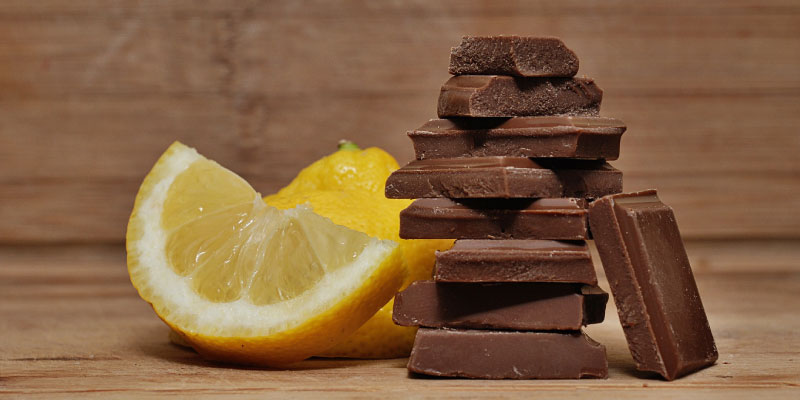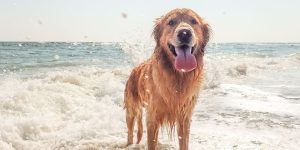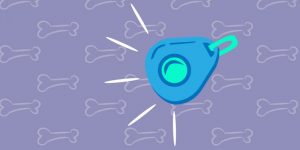We take a look at some of the most harmful dog food around your home, the ones to avoid and the ones to get to the Vets as soon as possible.
Owning a dog can be similar to looking after young children at times. They’re inquisitive and will put almost anything in their mouths. In dogs’ cases, if it looks like they can eat it, even better!

This is all very well, but dogs’ digestive systems are not designed to handle as balanced a diet as a humans’.
That’s why certain foods can not just be harmful, but toxic in same cases. To keep your dog safe around the home, keep an eye out for these unsafe foods for dogs.
What foods are harmful to dogs?
Many everyday items we keep in our kitchen cupboards can cause alarm. If your dog manages to get its snout on one of these, there is not an immediate need to panic, but you should expect to see symptoms.
Avocado
Avoid giving your dog this at all costs – while ingestion is not fatal, it could likely cause very unpleasant vomiting and diarrhoea. This is because avocados contain persin, which is harmful to canines.
Citrus fruits
While very small quantities of foods like oranges are unlikely to show noticeable harm, larger quantities may cause upset. Citrus fruits contain natural citric acid which could irritate your dog’s stomach lining, so don’t be surprised if this causes vomiting or loose stools.
Coconuts
Avoid giving your dog coconut water, as its potassium content is too high. Coconut oil and cream, meanwhile, may cause light stomach upsets such as diarrhoea.
Milk/other dairy products
Dogs do not produce as much of the enzyme lactase that we do. This is what breaks down dairy particles, so as a result, you may notice loose stools or obvious tummy pain. This isn’t true of all dogs, but it’s certainly not a necessary part of a dogs diet.
List of toxic food for dogs
Many human foods are something of a grey area when it comes to medical advice – they may not inherently be dangerous, for example raw meat, but they could present other hazards, like bone splinters.
For this reason, you should avoid all of the above mentioned foods. If nothing else, make sure your dog is nowhere near any of the following.
What foods are toxic to dogs? From chocolate to alcohol, the foods we consider to be everyday treats could result in tragedy for your pooch.
Alcohol
Even in minute quantities, alcohol may cause stomach troubles, along with impaired coordination, difficult breathing, tremors, a coma and even death. Never let your dog near alcohol – keep glasses and open bottles out of its reach and make sure you lock liquor cupboards.
Chocolate
Chocolate is up there with alcohol when it comes to the most toxic foods for dogs. This is because it contains a stimulant similar to caffeine called theomobrine. This attacks your dog’s central nervous system, shutting down the kidneys, heart and gut within between four and 24 hours. You could see any number of symptoms from vomiting to loose stools, restlessness, hyperactivity and even seizures.
Grapes and raisins
Grapes and dogs are a toxic combination. The same toxic substance that is in grapes can be found in raisins as it’s not extracted during the drying process. While there is no conclusive evidence as to what this is, it can cause kidney failure, so make sure you keep dogs away from grapes.
Onions, garlic and chives
Onions and other flavouring condiments like garlic and chives could be potentially fatal for your dog.
In particular, onions top the list of deadly foods for dogs, whatever form they’re in. They could be dried, raw, cooked, powdered or hidden within other foods.
They lead to gut irritation and could cause red blood cell damage or anaemia. For this reason, you should also keep your dog away from takeaway foods where you can’t be sure of the ingredients. They may ingest these garlic or onion powders within the sauce.
Mouldy foods
Whether it’s expired meat with salmonella or bread with green mould, these toxins could be fatal. Make sure you throw away all mouldy food, and watch carefully if your dog is eating bones. Raw bones should be chewed under supervision, for 10 to 15 minutes and put back in the fridge, before being thrown away after 3 days.
Nuts
Nuts, in particular, macadamia nuts, can cause vomiting, diarrhoea and even pancreatitis. They can also attack the central nervous system, resulting in swollen limbs, panting and general weakness. The exception here is peanuts, which seems to be relatively safe.
Salty or snack foods
They may seem harmless to us, but in large amounts, salty foods can cause excessive thirst or urination. In more extreme cases, you might note depression, tremors, high temperatures, seizures or death – likely caused by sodium iron poisoning. It may be tempting to feed your dog crisps, but you should avoid this to stay safe, especially on any regular basis.
Xylitol
This common food sweetener can cause toxicosis and hypoglycaemia, resulting in seizures and even liver failure. It’s present in sweets and toothpaste, so keep your dog away from these. Avoid processed food when possible.
What do if your dog eats some toxic foods
My dog ate onions – what can I do?
As with any food poisonous to dogs, the first step is not to panic. You might be concerned about chocolate toxicity in dogs, or the immediate effects of eating these household staples. First of all, try to find out how much your dog might have eaten. The amounts can have varying effects.
When it comes to onions, dogs generally don’t like the taste, so they’re unlikely to eat a lot. However, if you’re not sure, call your vet and bring them in immediately, especially if your dog begins to show signs of lethargy.
My dog ate grapes – what can I do?
When it comes to grapes and raisins, you generally have two hours to act. You should begin to notice vomiting by this point, but take your dog to the vet first.
The vet may have to administer hydrogen peroxide to induce vomiting. You can do this yourself, but it depends on the size of the dog and is best to leave to an expert.
My dog ate chocolate – what can I do?
Again, if you are certain your dog ate chocolate, head to the vet straight away. Chocolate poisoning in dogs needs immediate action, though symptoms usually appear within six to 12 hours.
To be safe, go to the vet as soon as possible and tell them what kind of chocolate your dog ate and how much. They will give your dog charcoal to prevent the theomobrine from being absorbed into the bloodstream. Be warned that your dog may need to stay overnight in extreme cases, such as seizures.
Remember: prevention is better than the cure
We all want to avoid a last-minute dash to the vets, so make sure you leave all of these foods – in particular, chocolate, onions and grapes – out of sight. Encourage young children to keep these foods away from dogs, and always watch them if they are consuming them.
Little ones may be tempted to ‘share’ food with your pooch, so keep your eyes open.
You can also teach your dog the ‘leave it’ command, which will encourage him/her not to eat food when listening to this verbal code.
This is ideal for mealtimes when these foods might be circulating. You can teach this command with a little positive reinforcement, for example, feeding him/her a treat when getting the response right.
While in small amounts, many foods are safe around dogs. The safest thing to do is to avoid ‘sharing’ and stick to your chosen pet food and treat. A full dog is a happy dog!
They won’t care they can’t have a bite of your chow mien or salt n vinegar chips if their dog bowl is food, and the treats are yummy.




